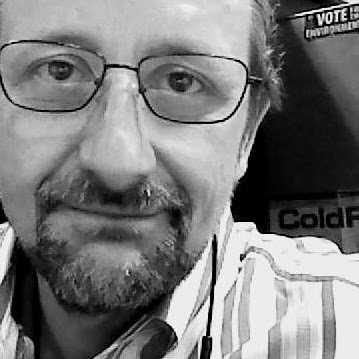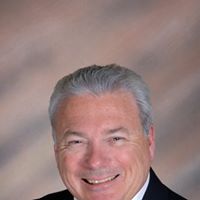David W Scruggs
age ~54
from El Paso, TX
- Also known as:
-
- Dave W Scruggs
- Davidw Scruggs
David Scruggs Phones & Addresses
- El Paso, TX
- 830 N Van Ness Ave APT 48, Los Angeles, CA 90038
- Rowland Heights, CA
- Valley Village, CA
- Redondo Beach, CA
- Austin, TX
- Rowland Heights, CA
Medicine Doctors

David A. Scruggs
view sourceSpecialties:
Orthopaedic Surgery
Work:
Carrollton Orthopedic ClinicCarrollton Orthopaedics Clinic PC
204 Allen Memorial Dr STE 102, Bremen, GA 30110
(770)5370611 (phone), (770)8346118 (fax)
204 Allen Memorial Dr STE 102, Bremen, GA 30110
(770)5370611 (phone), (770)8346118 (fax)
Languages:
English
Spanish
Spanish
Description:
Mr. Scruggs works in Bremen, GA and specializes in Orthopaedic Surgery. Mr. Scruggs is affiliated with Tanner Medical Center Carrollton.
Us Patents
-
Amorphous Metal/Reinforcement Composite Material
view source -
US Patent:55672515, Oct 22, 1996
-
Filed:Apr 6, 1995
-
Appl. No.:8/417749
-
Inventors:Atakan Peker - Pasadena CA
William L. Johnson - Pasadena CA
Robert Schafer - Worthington OH
David M. Scruggs - Oceanside CA -
Assignee:Amorphous Alloys Corp. - Laguna Niguel CA
-
International Classification:C22C 900
-
US Classification:148522
-
Abstract:A reinforcement-containing metal-matrix composite material is formed by dispersing pieces of reinforcement material throughout a melt of a bulk-solidifying amorphous metal and solidifying the mixture at a sufficiently high rate that the solid metal matrix is amorphous. Dispersing is typically accomplished either by melting the metal and mixing the pieces of reinforcement material into the melt, or by providing a mass of pieces of the reinforcement material and infiltration of the molten amorphous metal into the mass. The metal preferably has a composition of about that of a eutectic composition, and most preferably has a composition, in atomic percent, of from about 45 to about 67 percent total of zirconium plus titanium, from about 10 to about 35 percent beryllium, and from about 10 to about 38 percent total of copper plus nickel.
-
Extended Surface Area Amorphous Metallic Material
view source -
US Patent:46083197, Aug 26, 1986
-
Filed:Sep 10, 1984
-
Appl. No.:6/649070
-
Inventors:Gerald A. Croopnick - Trabuco Cyn CA
David M. Scruggs - San Juan Capistrano CA -
Assignee:Dresser Industries, Inc. - Dallas TX
-
International Classification:C22F 100
C21D 900
C23F 100
B01J 3200 -
US Classification:428613
-
Abstract:An extended surface area amorphous metallic article and process for preparation thereof, wherein a homogeneous amorphous metallic alloy is phase-separated to produce two interconnected, internally continuous, amorphous phases, and then one phase is removed. Preferably, the homogeneous metallic alloy has a composition associated with a eutectic between at least two solid solutions. Phase separation is accomplished by exposing the alloy to a temperature which is below the crystallization temperature and also below the phase separation temperature for that composition. Removal of one phase may be accomplished by leaching in a liquid solution, or by vaporization. The resulting article has an extended surface area of the amorphous phase that is not removed. A porous membrane having extended internal surface area may be prepared by continuing the removal process to the removal of one phase throughout the entire thickness of the article. The extended surface area articles, wherein the extended surface area is of an amorphous metal, enjoy particular advantages when used as catalysts.
-
Electrodeposition Of Amorphous Alloys And Products So Produced
view source -
US Patent:45296685, Jul 16, 1985
-
Filed:May 22, 1984
-
Appl. No.:6/612860
-
Inventors:Gerald A. Croopnick - Trabuco Canyon CA
David M. Scruggs - San Juan Capistrano CA -
Assignee:Dresser Industries, Inc. - Dallas TX
-
International Classification:C25D 356
-
US Classification:428665
-
Abstract:An electrodeposition process for depositing a boron-containing amorphous metallic layer onto a cathode from an electrodeposition bath having borophosphoric acid, dimethylamineborane or diethylamineborane; an ammonium salt of a hydroxycarboxylic acid or amino acid; and a source of the metallic ions. In one embodiment, tungsten-cobalt-boron amorphous alloys are deposited onto the cathode from a bath having borophosphoric acid, an ammonium salt of a hydroxycarboxylic acid or amino acid, a tungsten-containing salt and a cobalt-containing salt. In the preferred embodiment, the tungsten-containing salt is sodium tungstate, the cobalt-containing salt is cobalt sulphate, and the ammonium salt of a hydroxycarboxylic acid is ammonium citrate or ammonium tartrate. A range of bath compositions may be utilized to deposit the amorphous tungsten-cobalt-boron alloys onto the cathode, such alloys having high hardness and wear resistance and also having sufficient ductility to avoid cracking of the amorphous layer in fabrication and use. The electrodeposition process is preferably conducted at a voltage greater than the hydrogen over-voltage of the bath composition, and at a current density greater than about 20 milliamps per square centimeter.
-
Amorphous Metal/Reinforcement Composite Material
view source -
US Patent:58662545, Feb 2, 1999
-
Filed:Oct 15, 1996
-
Appl. No.:8/732546
-
Inventors:Atakan Peker - Pasadena CA
William L. Johnson - Pasadena CA
Robert Schafer - Worthington OH
David M. Scruggs - Oceanside CA -
Assignee:Amorphous Technologies International - Laguna Niguel CA
-
International Classification:I22C 900
-
US Classification:428378
-
Abstract:A reinforcement-containing metal-matrix composite material is formed by dispersing pieces of reinforcement material throughout a melt of a bulk-solidifying amorphous metal and solidifying the mixture at a sufficiently high rate that the solid metal matrix is amorphous. Dispersing is typically accomplished either by melting the metal and mixing the pieces of reinforcement material into the melt, or by providing a mass of pieces of the reinforcement material and infiltration of the molten amorphous metal into the mass. The metal preferably has a composition of about that of a eutectic composition, and most preferably has a composition, in atomic percent, of from about 45 to about 67 percent total of zirconium plus titanium, from about 10 to about 35 percent beryllium, and from about 10 to about 38 percent total of copper plus nickel.
-
Torsionally Reacting Spring Made Of A Bulk-Solidifying Amorphous Metallic Alloy
view source -
US Patent:57728038, Jun 30, 1998
-
Filed:Aug 26, 1996
-
Appl. No.:8/702918
-
Inventors:Atakan Peker - Aliso Viejo CA
William L. Johnson - Pasadena CA
David M. Scruggs - Oceanside CA -
Assignee:Amorphous Technologies International - Laguna Niguel CA
-
International Classification:C22C 4510
-
US Classification:148561
-
Abstract:A torsionally reacting spring, such as a helical spring, a torsion bar, or a torsion tube, requires the ability to torsionally deform elastically during service and return to its original, undeformed shape. The torsionally reacting spring is made of a bulk-deforming amorphous alloy which may be cooled from the melt at a cooling rate of less than about 500. degree. C. per second, yet retain an amorphous structure. A preferred bulk-solidifying amorphous alloy has a composition, in atomic percent, of from about 45 to about 67 percent total of zirconium plus titanium, from about 10 to about 35 percent beryllium, and from about 10 to about 38 percent total of copper plus nickel, plus incidental impurities, the total of the percentages being 100 atomic percent.
-
Amorphous Metal/Diamond Composite Material
view source -
US Patent:55675328, Oct 22, 1996
-
Filed:Aug 1, 1994
-
Appl. No.:8/284153
-
Inventors:Atakan Peker - Pasadena CA
William L. Johnson - Pasadena CA
Robert Schafer - Worthington OH
David M. Scruggs - Oceanside CA -
Assignee:Amorphous Alloys Corp. - Laguna Niguel CA
-
International Classification:C22C 900
-
US Classification:428457
-
Abstract:A diamond-containing metal-matrix composite material is formed by dispersing pieces of diamond throughout a melt of a bulk-solidifying amorphous metal and solidifying the mixture. The mixture may then be remelted and resolidified at a rate sufficiently high that the metal matrix retains an amorphous structure upon cooling. The metal preferably has a composition of about that of a eutectic composition, and most preferably has a composition, in atomic percent, of from about 45 to about 67 percent total of zirconium plus titanium, from about 10 to about 35 percent beryllium, and from about 10 to about 98 percent total of copper plus nickel. The diamond is preferably low-grade or artificial diamond.
Name / Title
Company / Classification
Phones & Addresses
P, Director
SOUTHWEST SALSA FACTORY INC
PO Box 14047, Irvine, CA 92623
License Records
David L Scruggs
License #:
E026935 - Expired
Category:
Emergency medical services
Issued Date:
Jan 29, 2010
Expiration Date:
Apr 30, 2016
Type:
Santa Cruz County EMS Agency
Resumes

Environmental Engineer At Department Of Defense Civilian
view sourcePosition:
Environmental Engineer at Department of Defense Civilian
Location:
Las Cruces, New Mexico Area
Industry:
Civil Engineering
Work:
Department of Defense Civilian
Environmental Engineer
Environmental Engineer

Field Application Engineer Samtec
view sourcePosition:
Field Application Engineer at Samtec Inc
Location:
Dacula, Georgia
Industry:
Electrical/Electronic Manufacturing
Work:
Samtec Inc - Georgia since Jul 2011
Field Application Engineer
Cornerstone Sales Oct 2007 - Jul 2011
Regional Manager
New Age / Kruvand Apr 2004 - Oct 2007
Outside Sales
Field Application Engineer
Cornerstone Sales Oct 2007 - Jul 2011
Regional Manager
New Age / Kruvand Apr 2004 - Oct 2007
Outside Sales
Education:
The University of Georgia 1995 - 1999
Bachelor of Business Administration, International Business
Bachelor of Business Administration, International Business
Skills:
Product Development
Key Account Management
New Business Development
Sales Management
Electronics
Key Account Management
New Business Development
Sales Management
Electronics

David Scruggs
view sourceLocation:
United States

David Scruggs
view sourceLocation:
United States

Aministrative Assistant At Warner Brothers Studios
view sourceLocation:
Greater Los Angeles Area
Industry:
Entertainment
Googleplus

David Scruggs
Work:
Salesforce.com - Principal Platform Engineer (12)

David Scruggs

David Scruggs

David Scruggs

David Scruggs

David Scruggs
Myspace

David Scruggs
view source
David Scruggs
view source
David Scruggs
view source
David Scruggs
view source
David Scruggs Jr.
view source
David Lee Scruggs
view source
Kim David Scruggs
view source
David Scruggs
view sourceClassmates

David Scruggs
view sourceSchools:
Tennessee School for the Deaf Knoxville TN 1992-1996
Community:
Elizabeth Davenport, Rebecca Britt, Preston Branch, Tim Troutman

David Scruggs
view sourceSchools:
Chesnee High School Chesnee SC 1967-1971
Community:
Kay Suttles, Randall Buchanan

David Scruggs
view sourceSchools:
Central Baptist High School Memphis TN 1987-1991
Community:
Sherry Little

David Scruggs
view sourceSchools:
Ridgeway High School Memphis TN 1978-1982
Community:
Terri Werne, Vicki Coffman

David Scruggs
view sourceSchools:
Oakland Technical High School Oakland CA 1988-1992
Community:
Jeffrey Elliott, Anthony Boyd, Kimberlea Evans

David Scruggs
view sourceSchools:
Amelon Elementary School Madison Heights VA 1973-1978

David Scruggs
view sourceSchools:
Excel High School Excel AL 1952-1956
Community:
Ed Parrish, Jim Palmer

David Scruggs
view sourceSchools:
Tomlinson Junior High School Lawton OK 1988-1991
Community:
Angel Williams, Chan Ly, Jeremy Doll
Youtube
Flickr
Plaxo

David Scruggs
view sourceSTL

David Scruggs
view sourceCir
Get Report for David W Scruggs from El Paso, TX, age ~54













